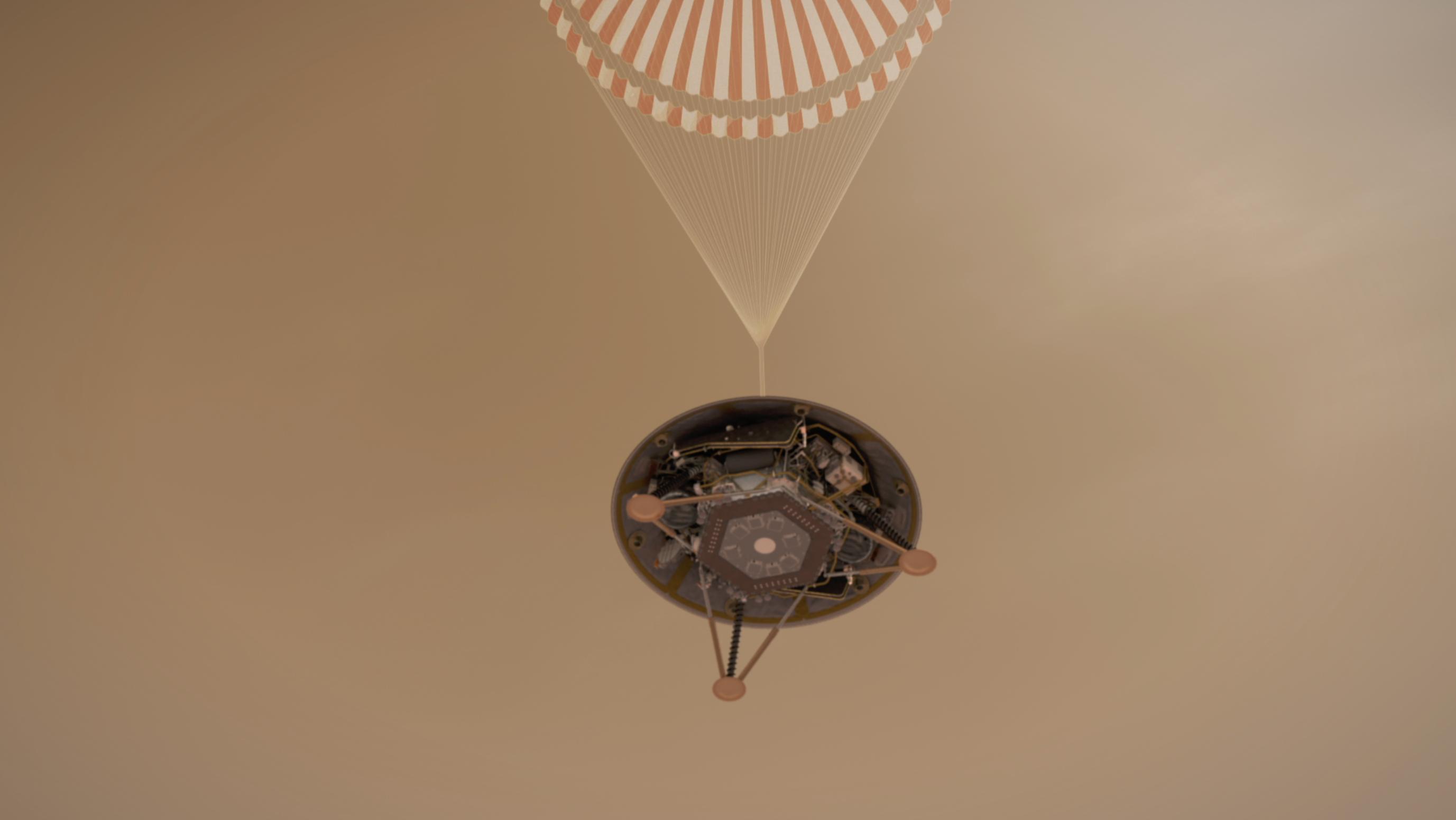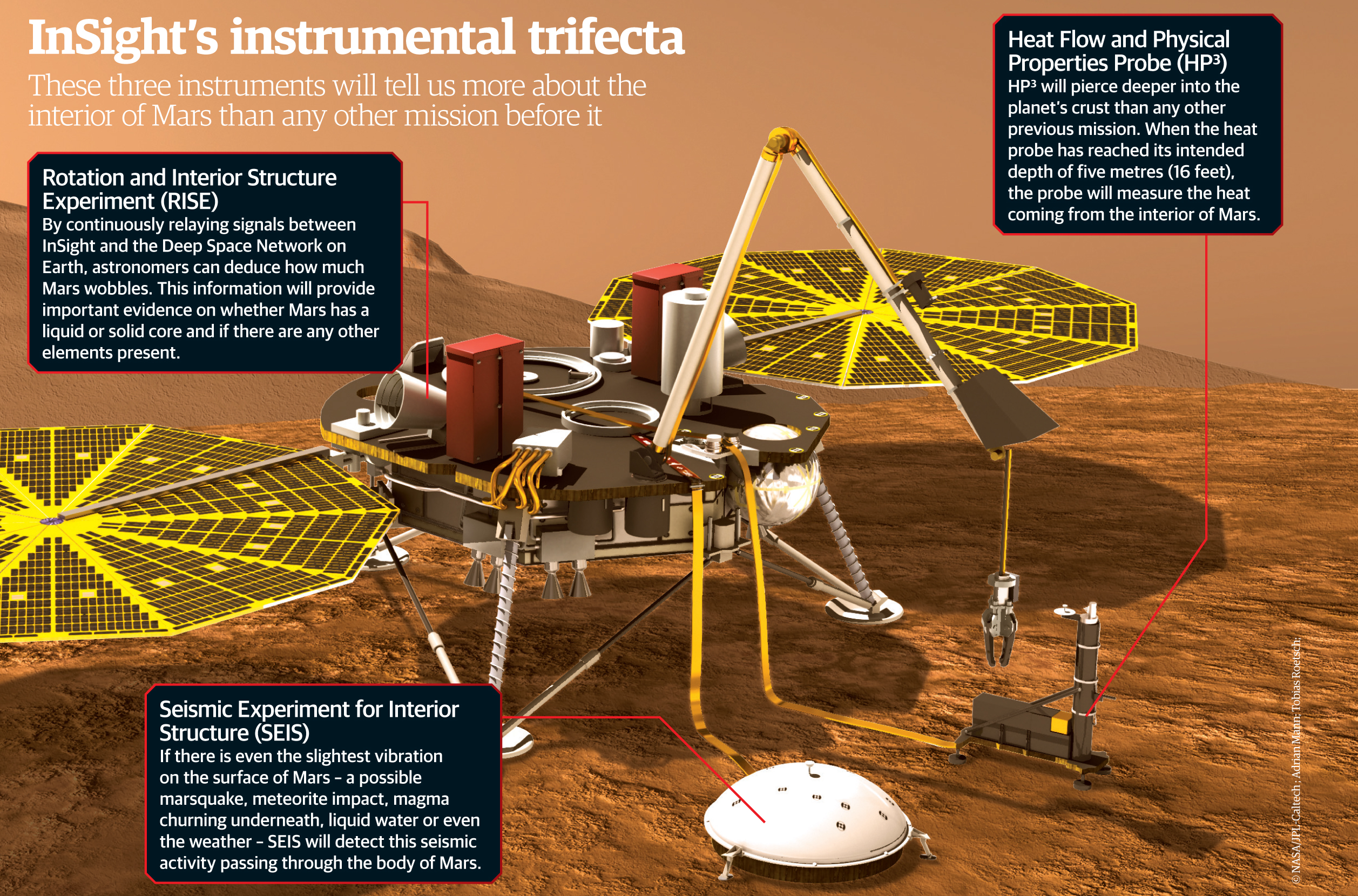NASA's InSight Mars Lander Reaches Mars Today! Here's What to Expect
PASADENA, Calif. — It all comes down to this.
After a nearly seven-month deep-space journey covering more than 300 million miles (483 million kilometers), NASA's InSight lander is set to touch down on Mars today (Nov. 26) just before 3 p.m. EST (2000 GMT). You can watch the action live here at Space.com courtesy of NASA, beginning at 2 p.m. EST (1900 GMT).
More than half of all Mars missions have failed to arrive safely at the Red Planet over the years, so the InSight team is anxious about today's events. [NASA's InSight Mars Lander: Full Coverage]
"I am completely excited and completely nervous, all at the same time," InSight project manager Tom Hoffman said yesterday (Nov. 25) during a news conference here at NASA's Jet Propulsion Laboratory (JPL).
"Everything we've done to date makes us feel comfortable and confident we're going to land on Mars," added Hoffman, who's based at JPL. "But everything has to go perfectly, and Mars could always throw us a curveball."
Hoffman also said that he's been having trouble sleeping over the past few days, but nerves aren't the only reason; his young grandkids are visiting for Thanksgiving, and they've been boisterous.
InSight will barrel into the Martian atmosphere today at about 12,300 mph (19,800 km/h). Atmospheric drag will dissipate about 90 percent of the lander's considerable kinetic energy, but that won't be enough; InSight will slow itself further with the aid of a supersonic parachute, and then thrusters.
Breaking space news, the latest updates on rocket launches, skywatching events and more!
If all goes according to plan, the lander will drop softly onto the red dirt of a flat, boring equatorial plain called Elysium Planitia at about 5 mph (8 km/h) — slightly faster than walking speed. And touchdown will occur a mere 6.5 minutes after InSight gets its first taste of Mars air.
But the tension won't abate right after landing. The InSight team won't know that the stationary spacecraft's solar panels have deployed until 8:35 p.m. EST (0135 GMT) at the earliest, when NASA's Mars Odyssey orbiter will be in position to relay home to Earth confirmation of that milestone event.
The $850 million InSight Mars lander mission — whose name is short for "Interior Exploration using Seismic Investigations, Geodesy and Heat Transport" — launched on May 5 atop an Atlas V rocket from Vandenberg Air Force Base in California. This was a first: all previous NASA interplanetary missions had launched from Florida's Space Coast.
The lander is outfitted with two main science instruments — a burrowing heat probe and a trio of incredibly sensitive seismometers. This equipment will help mission scientists map the Martian interior in unprecedented detail over the next two Earth years, revealing key insights about the formation and evolution of rocky planets, NASA officials have said.
The mission team will also use InSight's communications gear to measure the wobble of Mars' axial tilt. Such information will shed light on the size and nature of the planet's core.
This focus on the Martian interior explains why the mission team chose such a boring landing site: Cliffs, craters, ancient river deltas and other landscape features would serve only to complicate a safe touchdown.
And don't expect a flurry of data just after landing today: InSight's science work won't begin in earnest for several months. It'll take that long for the team to get ready to deploy the seismometer suite and heat probe, both of which InSight must place on the Martian surface with its robotic arm, and then calibrate the instruments.
"Once we get to the surface, InSight is a slow-motion mission," InSight principal investigator Bruce Banerdt, also of JPL, said during yesterday's news conference.
The lander launched with two briefcase-size spacecraft called MarCO-A and MarCO-B, which aimed to prove that cubesats can explore interplanetary space. The two free-flying probes have succeeded in this task, but they have one more job ahead of them: they will attempt to beam home data from InSight during the lander's entry, descent and landing today. A failure on this relay front won't be disastrous, however; other NASA craft, such as Odyssey and the Mars Reconnaissance Orbiter, will perform this work as well.
InSight was originally supposed to launch in March 2016, but mission team members detected a leak in the vacuum chamber surrounding the seismometers in late 2015. The leak was fixed, but not in time to meet that liftoff window. (Earth and Mars align favorably for planetary missions just once every 26 months, so InSight had to wait a while before finally getting off the ground.)
Visit Space.com today for complete coverage of the InSight landing on Mars.
Mike Wall's book about the search for alien life, "Out There" (Grand Central Publishing, 2018; illustrated by Karl Tate) is out now. Follow him on Twitter @michaeldwall. Follow us @Spacedotcom or Facebook. Originally published on Space.com.

Michael Wall is a Senior Space Writer with Space.com and joined the team in 2010. He primarily covers exoplanets, spaceflight and military space, but has been known to dabble in the space art beat. His book about the search for alien life, "Out There," was published on Nov. 13, 2018. Before becoming a science writer, Michael worked as a herpetologist and wildlife biologist. He has a Ph.D. in evolutionary biology from the University of Sydney, Australia, a bachelor's degree from the University of Arizona, and a graduate certificate in science writing from the University of California, Santa Cruz. To find out what his latest project is, you can follow Michael on Twitter.


